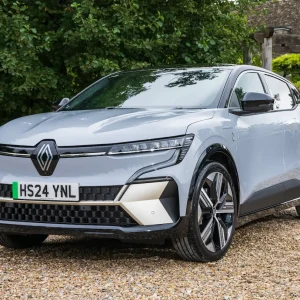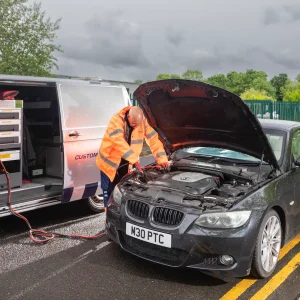Honda has kissed goodbye to its large 2.2-litre diesel engine and replaced it with a more powerful, 160hp version of its Euro6 1.6-litre unit, which is fitted to this facelifted CR-V.
The company had been criticised in the past for not keeping pace with rival manufacturers’ diesel technology and as well as 160hp the new engine offers CO2 of 129g/km.
It means fleet customers looking for a higher-powered diesel and 4WD can do so and remain under the capital write-down allowance threshold of 130g/km.
There is still the option of the 2WD 120hp 1.6-diesel, which is more beneficial from a tax and running costs perspective at 119g/km of CO2. However, some drivers may feel they want a bit more power on a car of this size.
The new engine takes the CR-V to the top of the pack in terms of whole-life costs at this power level. It offers more oomph than 4WD rivals, and CO2 is considerably lower too, pushing it two benefit-in-kind tax bands below the Mazda CX-5’s 23%. That means the Honda has the lowest payments each month for a 20% taxpayer at £96, and offers a competitive whole-life cost of 61.0p per mile.
There’s also a new nine-speed automatic transmission available with the 160hp diesel, but it pushes CO2 up to 134g/km so might not make it onto as many choice lists, but it’s very smooth and works well in combination with the 1.6.
Honda’s engineers have thickened the door seals and noise insulation to make the cabin quieter. There has been some improvement, but you can still hear the diesel rasping under harsher acceleration, and it’s not as refined as the Volkswagen Tiguan.
The styling alterations on the outside are pretty subtle, with a slight widening on the front-end bumpers and some tweaks to the rear lights and dashboard, so the majority of changes are found in new technology features and the diesel engine.
A standout tech item is Honda Connect, which enables drivers to link their Android phone to the car, and mirror their mobile’s features directly on the CR-V’s seven-inch touchscreen.
Connect comes as standard, and means drivers could use a free Google Maps satellite navigation app on their phone rather than paying for an optional £900 factory-fit version. Honda is working on making the tech compatible with iPhones too.
The firm is also offering new, optional technology on the CR-V with intelligent adaptive cruise control. It can make calculations based on distance and speed, and scans surrounding cars to predict whether they are likely to cut in.
The CR-V will brake smoothly when there’s a high likelihood of another vehicle crossing lanes erratically. This happened on our test on the motorway, and the speed at which the car reacts is impressive.
Honda, however, hasn’t yet confirmed pricing for its safety technology packs. While other passive safety systems are also optional, such as lane-keeping assist and traffic sign recognition, the CR-V does come with active city braking on all models, which will stop the car in potential collisions up to 30mph.
Another string to the CR-V’s bow is its practicality, with a larger boot than the CX-5 and the Tiguan. Only the Toyota Rav4 offers more space.
Honda CR-V 1.6-iDTEC 160 SE |
| Model price range £23,950-£28,315 |
| Residual value 35.0% |
| Depreciation £17,890 |
| Fuel £6300 |
| Service, maintenance and repair £2181 |
| Vehicle Excise Duty £220 |
| National Insurance £2506 |
| Cost per mile 61.0p |
| Fuel consumption 51.4mpg |
| CO2 (BIK band) 129g/km (21%) |
| BIK 20/40% per month £96/£193 |
| Service interval 1yr/12,500mls |
| Insurance (1-50) group 24 |
| Warranty 3yrs/ 90,000mls |
| Boot space (min/max) 589/1669 litres |
| Engine size/power 1597cc/160hp |





